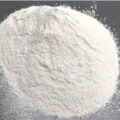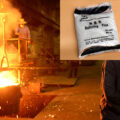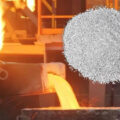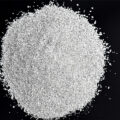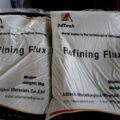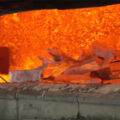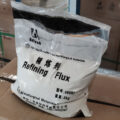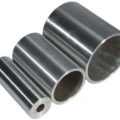Based on the current refining and many existing problems, as well as comparing foreign products, refining flux Improvement imminent.
Foreword In September 2020, President Xi Jinping proposed at the general debate of the 75th United Nations General Assembly that my country should strive to achieve carbon neutrality by 2030 and 2060. On April 30, 2021, during the twenty-ninth collective study of the Political Bureau of the CPC Central Committee, President Xi Jinping emphasized that party committees and governments at all levels must show the strength to grasp the iron marks and stamp on the stones and clarify the timeta

refining flux
ble, roadmap, and construction drawings. , The promotion of economic and social development is based on the efficient use of resources and green and low-carbon development. The aluminum industry is a basic industry for developing the national economy and improving people’s living standards, and it is also an industry with high energy consumption and high carbon emissions. Exploring the emission reduction path of the aluminum industry is crucial to achieving my country’s carbon peaking and carbon neutrality goals. The energy consumption of secondary aluminum production is only 4.86% of that of primary aluminum, the carbon emission is only 4.21% of that of primary aluminum, and the quality of secondary aluminum is the same as that of primary aluminum. The world’s secondary aluminum production accounts for an average of 33% of total aluminum production, while China’s secondary aluminum only accounted for 17% of total aluminum production in 2019. If at the end of the “14th Five-Year Plan”, the proportion of China’s secondary aluminum production can reach the world average level, China’s aluminum industry will be able to achieve carbon peaking and carbon neutrality ahead of schedule. In recent years, my country’s secondary aluminum industry has developed steadily. The output was 3.61 million tons: 7.25 million tons in 2019, an increase of nearly 100.83% in ten years. However, there is still a significant gap between my country’s secondary aluminum processing technology and equipment and facilities compared with developed countries, and problems such as low efficiency, high energy consumption, and low product-added value are relatively prominent. Among them, the purification technology of aluminum melt is the production of high-quality aluminum ingots The technical barriers and technical difficulties of molten aluminum are currently in urgent need of developing green, high-efficiency, and multi-functional composite refining fluxes, which is also in line with the “Technical Policy for Pollution Prevention and Control in the Secondary Aluminum Industry” issued by the Ministry of Ecology and Environment on September 25, 2018. Research and development of new technologies are encouraged in the “Draft for Comments)”.
The refining flux for aluminum and aluminum alloys is often composed of chloride salts, fluoride salts, carbonates, sulfates, and nitrates containing alkaline (earth) metal elements, graphite powder, and rare earth compounds. At present, there are many kinds of fluxes on the market, and the refining effect is uneven. Even if the slag removal and degassing effect can meet the qualified requirements, there are still many other problems.
It can be seen from the commonly used refining fluxes for aluminum alloys at home and abroad that: (1) refining fluxes generally have the disadvantage that their functions are too single. slag, etc.), which not only complicates the refining process but uses too much flux and may lead to flux inclusions and serious burning of molten aluminum; (2) The refining fluxes mostly contain harmful components, such as C2CNa2SiF, etc. Na2SiF. At high temperatures, it will decompose to produce SiF4 toxic gas: although C2C1 has a good degassing effect, it will produce C2Cl, AICl3, HCl, and Cl in the process of reacting with the aluminum melt, which will deteriorate the working site environment, harm the health of workers and cause corrosion.

